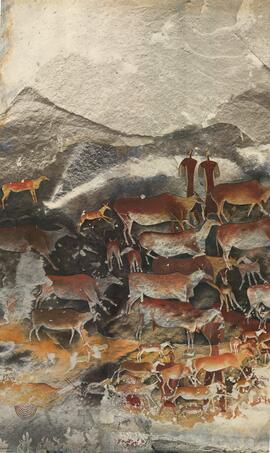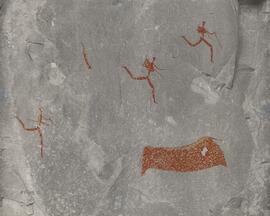HPC HPC-RARI-HPC-01-51HC.jpg
·
Item
Part of Pager, Harald
Of particular note is the eland painted as seen form the back with its head turned to the right and, further on to the right an eland, painted as seen from the front looking straight out of the rock face.
Many of the human figures are so elongated that they give the impression that they might have been modelled on early black hunting parties visiting the area. On the other hand, however, their clothing and artefacts are typical of the Bushmen. A really satisfactory explanation for this elongation has still to be found and it has also been suggested that the Bushmen artists deliberately exaggerated because of their desires not to be considered small. Whatever the explanation, the artistic effect is dramatic and provides an excellent contrast to the shaded polychrome eland. Attenuated figures (elongated figures).
P40 pager F163. Botha’s Shelter I











